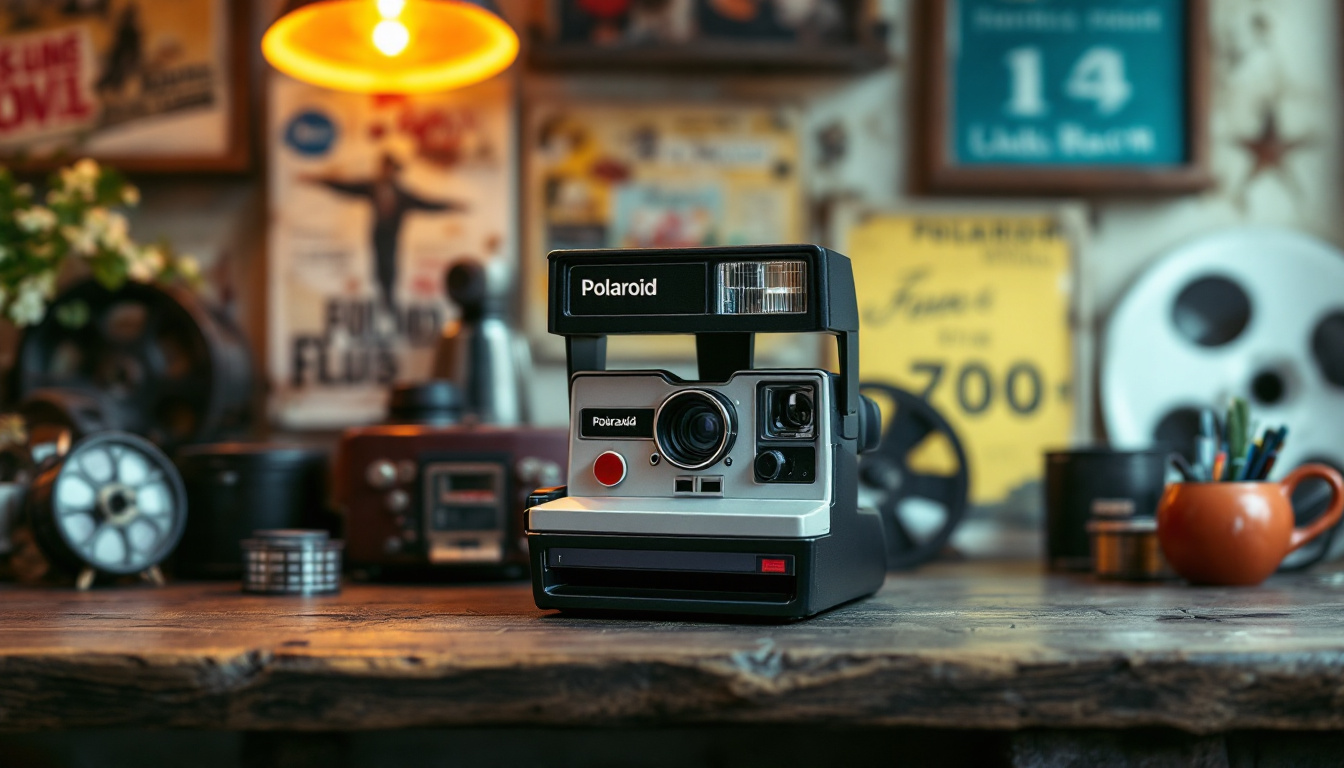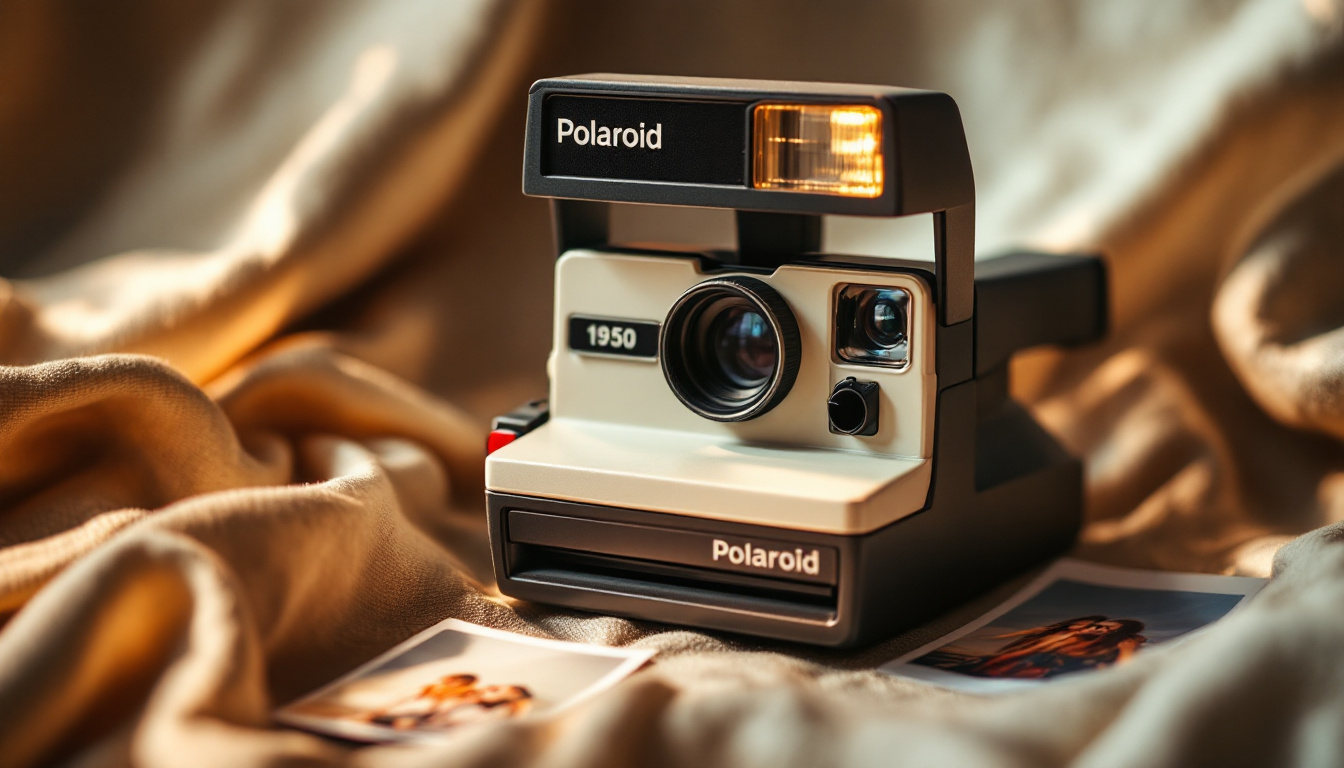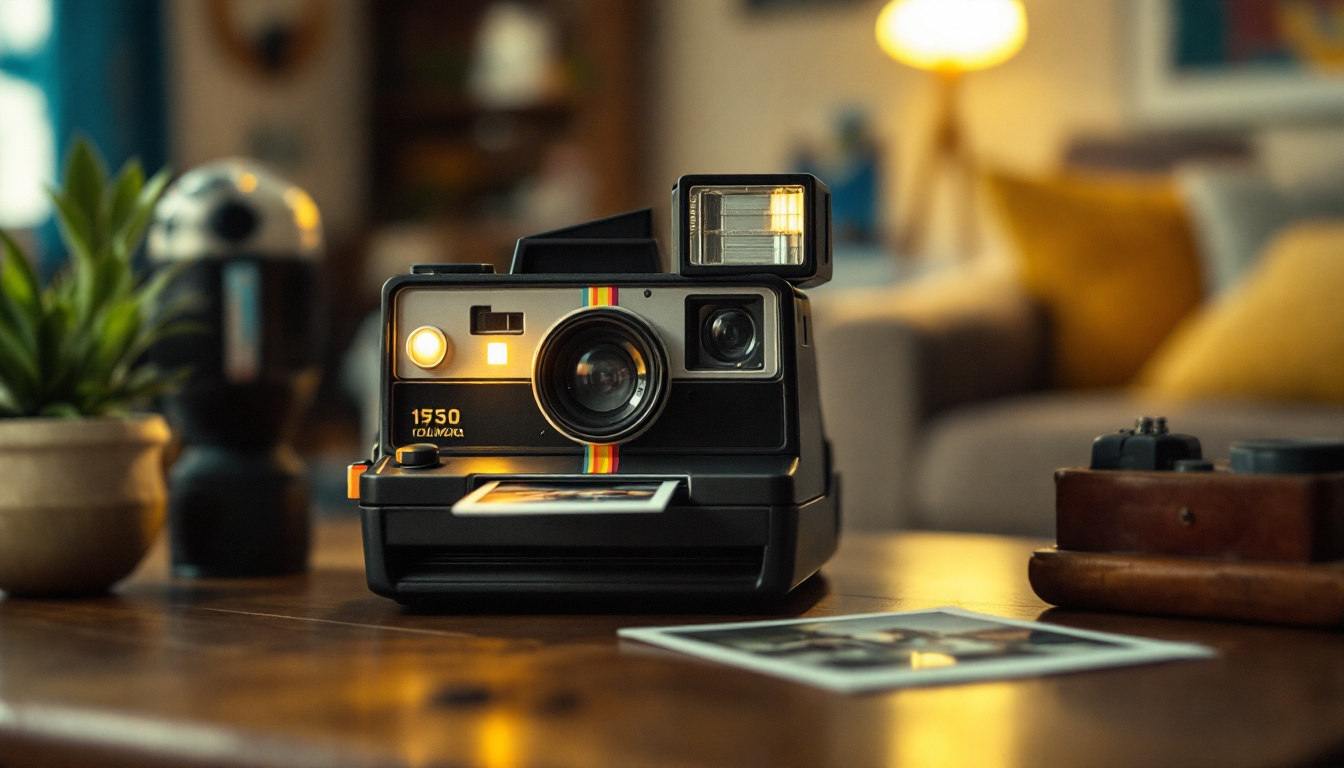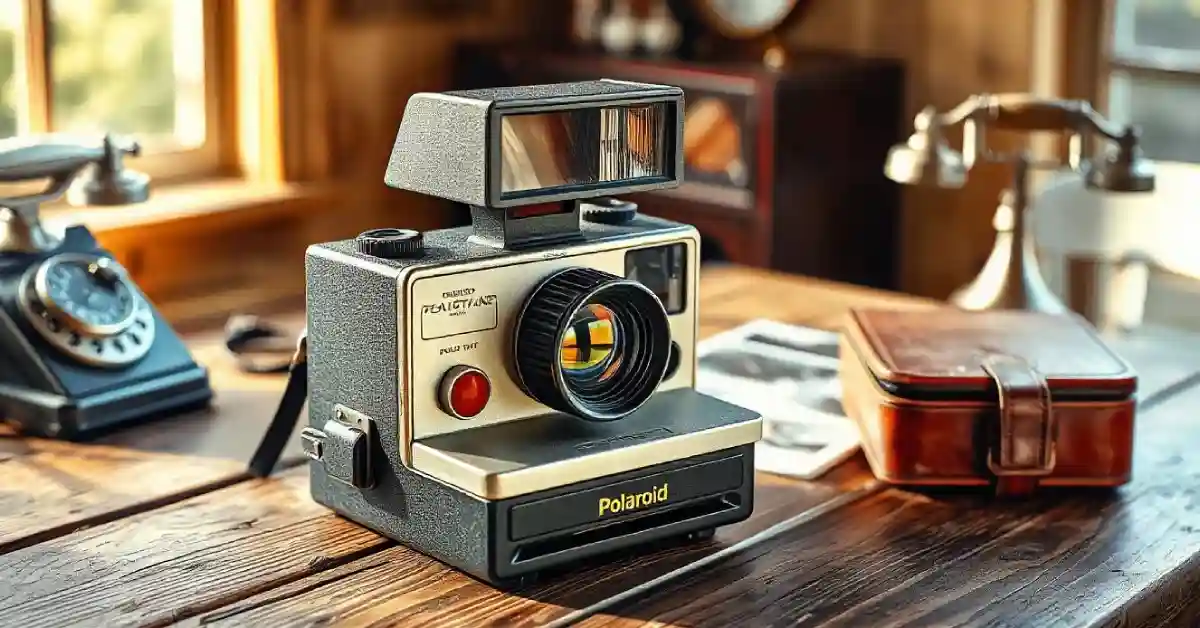Vintage 1950s Polaroid cameras embody a unique combination of nostalgia, innovation, and artistry. These cameras, which introduced the fascinating concept of instant photography, revolutionized the way memories were captured. This article delves into the various aspects of vintage Polaroid cameras, exploring their history, aesthetic appeal, functionality, cultural impact, and value in today’s world.
The Birth of Polaroid Cameras in the 1950s
The inception of Polaroid cameras can be traced back to the creative mind of Edwin Land, who founded the Polaroid Corporation in 1937. However, it was in the 1950s that Land’s vision materialized with the introduction of the first commercially successful instant camera, the Polaroid Land Camera Model 95.

This groundbreaking camera allowed users to take a photograph and witness the printed image develop within minutes. It marked a significant turning point in photography, providing an unprecedented convenience that traditional methods could not offer. The excitement of capturing a moment and seeing it come to life in real-time resonated with the public, leading to a surge in popularity that would redefine personal photography.
The Inventor Behind the Camera
Edwin Land was not only an inventor but also an innovator who changed the way people interacted with photography. His passion for science and creativity led to numerous breakthroughs in photographic processes. Land’s understanding of the chemistry required to produce instant prints paved the way for the development of Polaroid cameras. He was known for his hands-on approach, often experimenting in his lab to refine the technology that would ultimately revolutionize the industry.
Despite facing skepticism during the early years, Land persisted, believing in the potential of instant photography. His determination resulted in the creation of a camera that would not only capture moments but also allow users to experience the joy of immediate gratification. This innovation was particularly appealing to families and social gatherings, where the ability to instantly share photographs became a cherished part of the experience, fostering connections and creating lasting memories.
The Technological Breakthrough of Instant Photography
The technical marvel of instant photography lies in its unique development process, which employs a complicated series of chemical reactions. When the shutter button is pressed, the film is exposed to light, and the subsequent development occurs within a self-contained unit that includes all necessary chemicals. This intricate system was a feat of engineering, combining chemistry and mechanics to produce a tangible product in mere minutes.
This innovation eliminated the need for darkrooms or lengthy development times, making photography more accessible and enjoyable for everyone. It sparked excitement and creativity among users, allowing them to instantly share memories with friends and family. The instant camera quickly became a staple at events, from birthday parties to vacations, as people embraced the novelty of capturing and sharing moments on the spot. The cultural impact of the Polaroid camera extended beyond mere convenience; it encouraged a new form of artistic expression, where spontaneity and immediacy became integral to the photographic process.
The Aesthetic Appeal of Vintage Polaroid Cameras
Beyond their technical prowess, vintage Polaroid cameras are celebrated for their charming aesthetic. These cameras represent a bygone era, characterized by unique designs and distinctive features that appeal to both collectors and casual users alike.

The Retro Design
The 1950s Polaroid cameras showcase a blend of form and function, with sleek lines, bold colors, and an eye-catching presence. The design reflects the mid-century modern aesthetic, with elements that evoke a sense of nostalgia and timelessness.
Many models feature eye-catching designs, such as the Polaroid Land Camera 95, which came in vibrant colors and iconic shapes, making them as much a statement piece as a functional tool for capturing memories. The tactile experience of handling these cameras, with their smooth finishes and satisfying clicks, adds to their allure, inviting users to engage with the photography process in a more intimate way.
Moreover, the accessories that often accompany these vintage cameras, such as colorful carrying cases and distinctive film packs, further enhance their aesthetic appeal. These elements not only serve practical purposes but also contribute to the overall visual narrative, making each outing with a Polaroid an experience steeped in style and character.
The Unique Photo Quality
An undeniable aspect of vintage Polaroid cameras is their unique photo quality. The photographs produced possess a distinctive color palette and a dreamy softness that cannot be replicated by modern digital cameras. This quality gives the images a nostalgic feel that resonates with many photographers today.
Additionally, the square format of Polaroid prints adds to their charm, providing a visual appeal that encourages creativity and artistic expression. Each photo tells a story, encapsulating moments in a way that is both immediate and enduring. The instant gratification of watching a photo develop right before your eyes creates a sense of magic that is often lost in the digital age, where images can be taken and discarded with a mere swipe.
Furthermore, the unique chemical process involved in developing Polaroid film contributes to the unpredictable nature of the final image. This element of surprise, where colors may bleed or textures may appear unexpectedly, adds an artistic quality that many photographers find liberating. Each print becomes a one-of-a-kind artifact, a tangible memory that embodies the spontaneity and joy of capturing life’s fleeting moments.
The Functionality of 1950s Polaroid Cameras
The functionality of these cameras played a crucial role in their popularity. The innovative mechanics allowed for an enjoyable photographic experience, making it easy for users to capture their desired moments without the constraints of conventional photography.

The Mechanism of Instant Photography
The magic of instant photography lies in its carefully designed mechanism. When a photo is taken, the film’s layers react to light, allowing for the image to be developed on-the-spot. Users simply pull the film from the camera, and within minutes, the image begins to materialize.
This process is not only fascinating but also creates a sense of anticipation; watching the photo develop becomes an integral part of the experience. It is this combination of science and magic that captivates users and keeps them coming back for more. The excitement of seeing a moment captured in real-time added a unique layer to social interactions, as friends and family gathered around to witness the image unfold, often sparking conversations and laughter as they reminisced about the captured moment.
The User-Friendly Features
Vintage Polaroid cameras are designed with user experience in mind. Many models feature straightforward, intuitive controls that enable users to take photographs without the need for extensive technical knowledge or training.
Moreover, the simplicity of loading film and operating the camera makes it accessible to people of all ages. Whether capturing family gatherings, vacations, or spontaneous moments, these cameras provide a user-friendly way to immortalize memories with minimal hassle. The tactile experience of holding the camera, pressing the shutter, and eagerly waiting for the photo to emerge from the slot creates a tangible connection to the art of photography. This simplicity not only democratized photography but also encouraged creativity, as users felt empowered to experiment with angles, lighting, and composition without the fear of complicated settings or the need for professional equipment.
The Cultural Impact of Polaroid Cameras
Beyond their hardware and design, vintage Polaroid cameras have greatly influenced culture and art over the years. Their unique ability to create instant prints has imprinted them in the collective memory of society.
Polaroid Cameras in Popular Culture
During the 1950s and beyond, Polaroid cameras became iconic within popular culture. They appeared in numerous films, television shows, and advertisements, quickly becoming synonymous with spontaneous creativity and carefree living.
Artists and photographers embraced Polaroid cameras, utilizing their instant results to document daily life in a candid and raw manner. The cultural significance of Polaroid images can be seen in the works of famous photographers, such as Andy Warhol and Ansel Adams, who incorporated these cameras into their artistic practices.
The Influence on Photography Styles and Trends
The advent of instant photography fostered a new wave of styles and trends in photography. It encouraged a more informal approach, with an emphasis on capturing moments as they are, without the pressures of staging or perfection.
This shift laid the groundwork for a variety of contemporary photography movements, such as street photography and candid portraiture. Polaroid cameras promoted the idea that photography could be spontaneous and expressive, inspiring generations of photographers.
The Value of Vintage Polaroid Cameras Today
In recent years, the allure of vintage Polaroid cameras has sparked renewed interest among collectors and photography enthusiasts. Whether for nostalgic reasons or as a means of creative expression, these cameras hold significant value.
Collecting Vintage Cameras
Collecting vintage Polaroid cameras has become a popular hobby, as enthusiasts seek to own pieces of history. The rarity of certain models and their unique features contribute to their desirability in the collector’s market. Prices for well-preserved models have appreciated considerably, making them sought-after items.
Many collectors cherish their cameras not just as instruments of photography but as artifacts of mid-century design and innovation. The appeal extends beyond their functionality, as they symbolize a transformative period in photographic history.
The Resurgence of Polaroid Popularity
In conjunction with the growing interest in vintage cameras, Polaroid has made a comeback with modern instant photography products that pay homage to their vintage predecessors. This resurgence reflects a cultural appreciation for tangible memories in an increasingly digital world.
Today’s digital generation is embracing the joy of instant photography, drawing parallels between the experiences of using vintage Polaroid cameras and contemporary instant film products. This cyclical trend showcases how timeless the charm of instant photography truly is.
In closing, vintage 1950s operable Polaroid cameras encapsulate a unique blend of history, artistry, and nostalgia. They represent a momentous leap in photographic technology while offering an inviting experience that resonates with both collectors and casual users alike.










